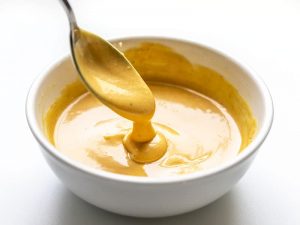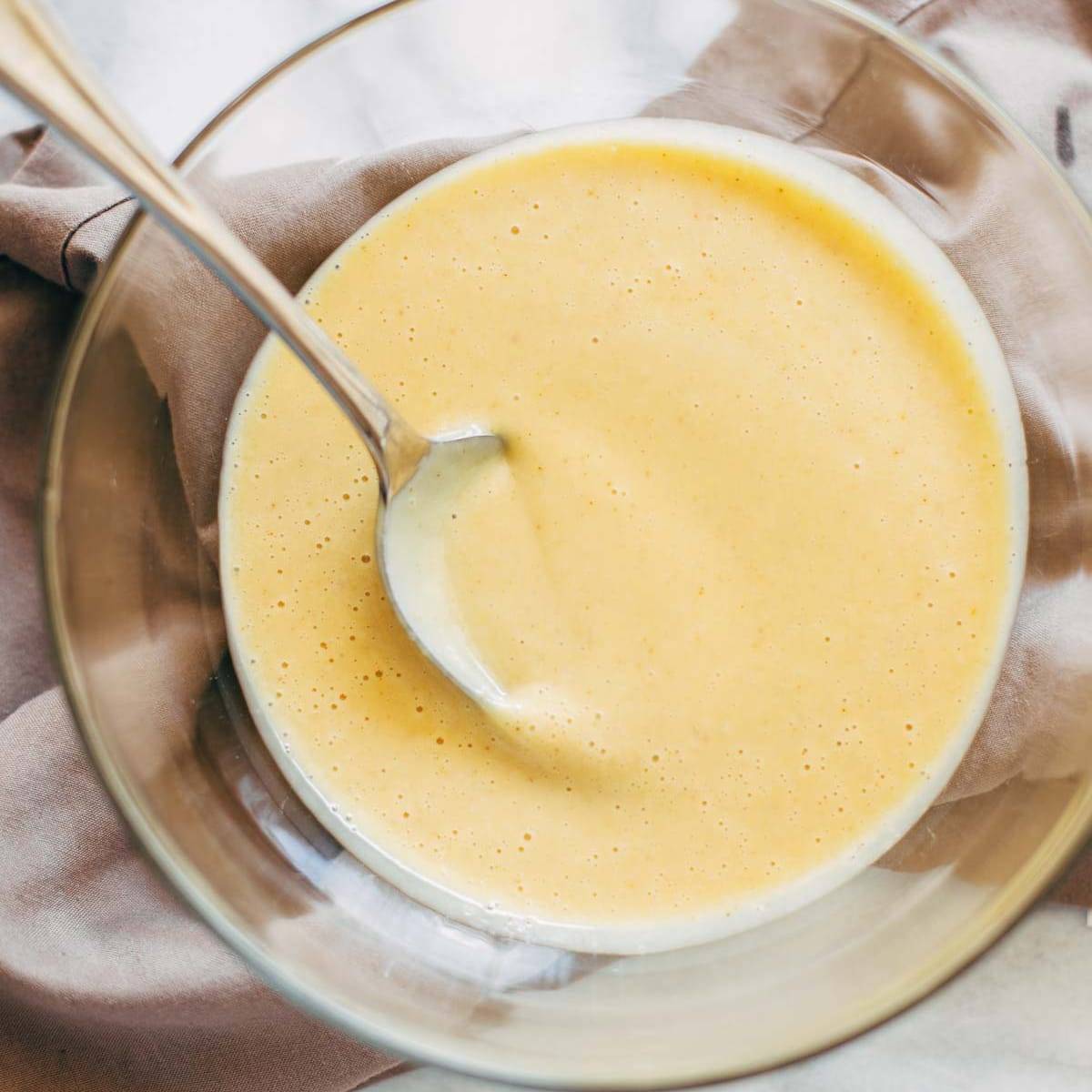Serve the mustard from the supermarket, with that slightly dull color and that vague soufflé texture: it’s time to learn how to make mustard at home. Believe me when I tell you that you will never go back: the commitment is minimal, and the homemade version is decidedly better than (almost all) the industrial ones and healthier because it is free of refined sugar and added sulfites. The list of ingredients you need is concise: mustard seeds, apple vinegar, honey, and a pinch of salt. Stop. It stretches, but only slightly, if instead of the basic recipe you want to prepare flavored mustard – see it later.
Be careful to call it mustard.
Let’s start with the classic recipe, which some old grandmother’s cookbook defines as ” old-fashioned mustard.” By the way, do you know why mustard? Because in France, home to one of the most popular varieties globally, the very spicy Dijon mustard, the word mustard is precisely motard e. In Italian, however, mostarda indicates a preparation based on fruit, sugar, and mustard essence.
To avoid misunderstandings, it is always better to use the word mustard in restaurants when you ask the waiter for it. Especially if you are in the province of Mantua and Cremona, where mustard is a kind of religion, you will risk dressing your fries with a delicious quince compote!
Mustard seeds to make honey mustard?
White, yellow, black, red, brown – the seeds of the mustard plant can be of many colors. The shades reveal a different degree of spiciness and spiciness, which true mustard addicts can recognize with their eyes closed. The traditional basis for making mustard at home is a mix of yellow and black seeds.
Dijon mustard, for example, is made with black ones, while another rather famous French variety, the Alsatian one, is based on white seeds. It is sourer but less spicy: I recommend it to those unfamiliar with this sauce and who are looking for an undemanding approach.
How to make mustard at home: the ingredients
But let’s go back to the recipe. The essential ingredients are 30 grams of mustard seeds (yellow and black), 3 cl of apple cider vinegar, 5 cl of water, one teaspoon of honey, salt, and… elbow grease. Yes, because mustard is prepared in a mortar, crushing the seeds as you would with the basil to make pesto. The finer the roots are destroyed, the more homogeneous the consistency of the mustard will be. But it’s not just a question of creaminess: the spiciness will also be more significant. There is always plan B or the mixer. But I prefer to use the pestle: it is also excellent for letting off steam, and for training the biceps, you need to alternate the arms.
The recipe for homemade mustard
However, before crushing them (or blending them), the seeds must be poured into a bowl with water and apple cider vinegar. Let them rest in the liquid for at least 12 hours, covering the bowl with a cloth; no need to refrigerate. Mucilage will form on the surface, a sticky substance produced by many plants in contact with water. After 12 hours, add the honey and a pinch of salt. Pound (blend) properly until you get a sauce of the desired consistency. Transfer everything to a sterilized glass jar, close it hermetically and leave it in the fridge for at least a couple of days. In this way, the ingredients will blend properly.

Mustard, love, and fantasy
From here you can leave for many trips and experiments. If you want to make your mustard even more spicy and fresh, you can add some ginger root. For a Mediterranean version, green light with mint leaves, basil, myrtle, and rosemary. To increase the sweetness, double the dose of honey or add a few dried fig pieces. The crunchy note can given by some walnut kernels, chopped hazelnuts, or, why not, other seeds such as pumpkin and poppy seeds.
Also read: how to see who unfollowed you on Instagram






17 thoughts on “How to make honey mustard?”
teleradiostereo
(November 3, 2023 - 9:25 pm)Great post Thank you. I look forward to the continuation.
102.3 JACK fm - CHST-FM
(November 4, 2023 - 3:56 pm)For the reason that the admin of this site is working no uncertainty very quickly it will be renowned due to its quality contents.
newsmax livestream
(November 7, 2023 - 5:17 pm)Also I ve shared your site in my social networks!
bbcpersian
(November 9, 2023 - 5:19 am)I am truly thankful to the owner of this web site who has shared this fantastic piece of writing at at this place. Watch bbcpersian
TEK RUMELI TV
(November 11, 2023 - 12:11 am)very informative articles or reviews at this time.
racing dubai live
(November 15, 2023 - 4:18 am)Very well presented. Every quote was awesome and thanks for sharing the content. Keep sharing and keep motivating others.
Will it ever be possible for time travel to occur?
(November 15, 2023 - 5:51 am)You re so awesome! I don t believe I have read a single thing like that before.
How to Listen to SiriusXM Radio Online
(November 26, 2023 - 5:47 pm)very informative articles or reviews at this time.
Newsmax TV Live
(November 26, 2023 - 6:16 pm)I like the efforts you have put in this regards for all the great content.
pieregistrēties binance
(February 2, 2024 - 4:40 am)Thanks for sharing. I read many of your blog posts, cool, your blog is very good. https://www.binance.com/lv/join?ref=RQUR4BEO
зарубежные сериалы смотреть онлайн
(March 21, 2024 - 2:27 pm)Hi there, I believe your site may be having browser compatibility issues. When I look at your web site in Safari, it looks fine but when opening in IE, it has some overlapping issues. I simply wanted to give you a quick heads up! Other than that, wonderful blog!
глаз бога тг
(April 10, 2024 - 5:52 am)Hey there, You have done a great job. I will definitely digg it and personally recommend to my friends. I am sure they will be benefited from this site.
глаз бога телеграмм
(April 10, 2024 - 7:08 pm)You really make it seem so easy with your presentation but I find this topic to be really something which I think I would never understand. It seems too complicated and very broad for me. I am looking forward for your next post, I will try to get the hang of it!
steam cs gamble sites
(May 7, 2024 - 10:05 pm)Howdy! This post couldn’t be written any better! Reading this post reminds me of my good old room mate! He always kept talking about this. I will forward this page to him. Pretty sure he will have a good read. Thank you for sharing!
new cs live gambling websites
(May 8, 2024 - 6:06 pm)Hi! I just wanted to ask if you ever have any trouble with hackers? My last blog (wordpress) was hacked and I ended up losing a few months of hard work due to no backup. Do you have any solutions to prevent hackers?
steam cs:go skins betting websites 2024
(May 9, 2024 - 6:59 am)Ahaa, its good conversation regarding this piece of writing here at this weblog, I have read all that, so now me also commenting here.
steam cs live gamble site
(May 9, 2024 - 6:17 pm)What’s up, its nice article concerning media print, we all be familiar with media is a impressive source of information.